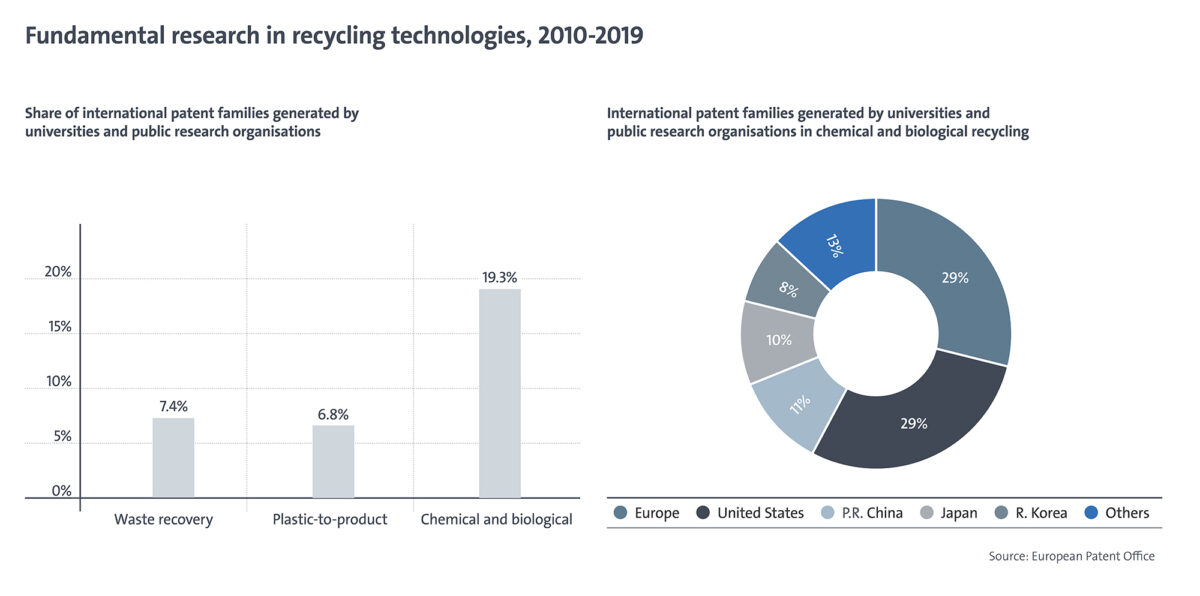Sustainability Is Driving Much Plastics Innovation

Recycling trends and biobased materials exert broad effects on pricing and products
In reviewing notes taken at conferences this year, one point is clear: the plastics industry is navigating a wave of innovation based on sustainability practices.
At a gathering in Florida, the Plastics News Forum, Paul Tayler, CEO of Nexeo Plastics, identified two areas where disruptive trends are evident: recycling technologies and alternative plastics like biobased materials.
U.S., Europe Dominate ‘Green’ Technology Patents
Starting with a review of global patents, Tayler showed that the U.S. and Europe account for about 60 percent of filed patent applications in these sectors. His premise comes from a startling statistic in a McKinsey report: 65 percent of the world economy is committed to be carbon neutral by 2040. Yet there is a gap of 50 to 60 percent between supply and demand for high-quality recycled plastics alone.
The entire recycled plastics market is based on spot prices with glaring deficiencies in long-term contracts and commitments from buyers, he said. The U.S. Plastics Pact recently announced that most 2025 recycling targets will not be met, harshly illustrating a lack of true accountability from those brands that signal for more supply yet are unwilling to pay higher prices.
Eric Roegner, president of Amcor Rigid Plastics and a former aluminum industry executive, stated that the plastics industry is “the most sustainable industry on earth.”
He also said, however, that the aluminum industry has won the narrative battle with consumers despite serious flaws in its recyclability claims. The maximum amount of recycled content possible in aluminum cans is 67 percent, while PET bottles can be made from 100 percent recycled material. The intense heat required for glass and aluminum recycling, moreover, leads to greater greenhouse gas emissions. Yet aluminum benefits from an established infrastructure and pricing fundamentals where recycled aluminum is cheaper than virgin.
Recycling Can Generate Jobs and Revenue
PET recycling rates have stagnated around 28 percent for the past several years, but the average rate in the 10 states with bottle bills is 54 percent. It appears that causation and correlation are aligned here, yet tension between curbside programs and deposit schemes regarding who will ultimately be able to access the material in the recycling stream means that the U.S. will continue to have patchwork regulations in combination with over 9,000 recycling programs.
This doesn’t square with the economic impact of recycling, which is significant—681,000 jobs created and $5.5 billion generated in tax revenues, which equates to 1.17 jobs for every 1,000 pounds of materials recycled.
